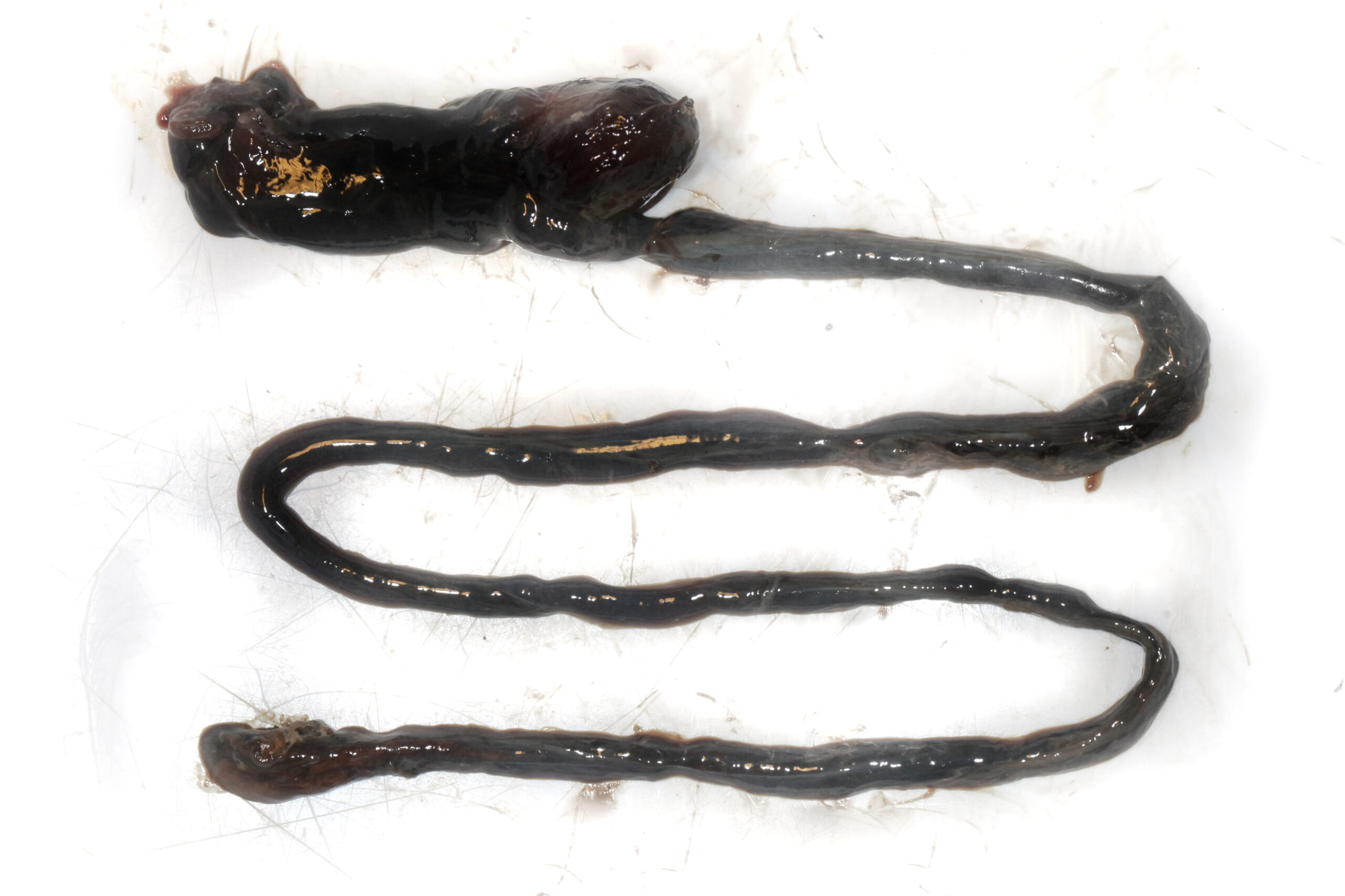How to perform heavy duty, hanging on a smooth tree stem?
Tree climbing
Like most woodpeckers, black woodpeckers are adapted to a vertical life clinging on to tree stems and trunks. Unlike mammal tree climbers, such as pine martens or red squirrels, woodpeckers are equipped with very strong, large, and sharp nails, which are exceptionally large to withstand high grip forces.

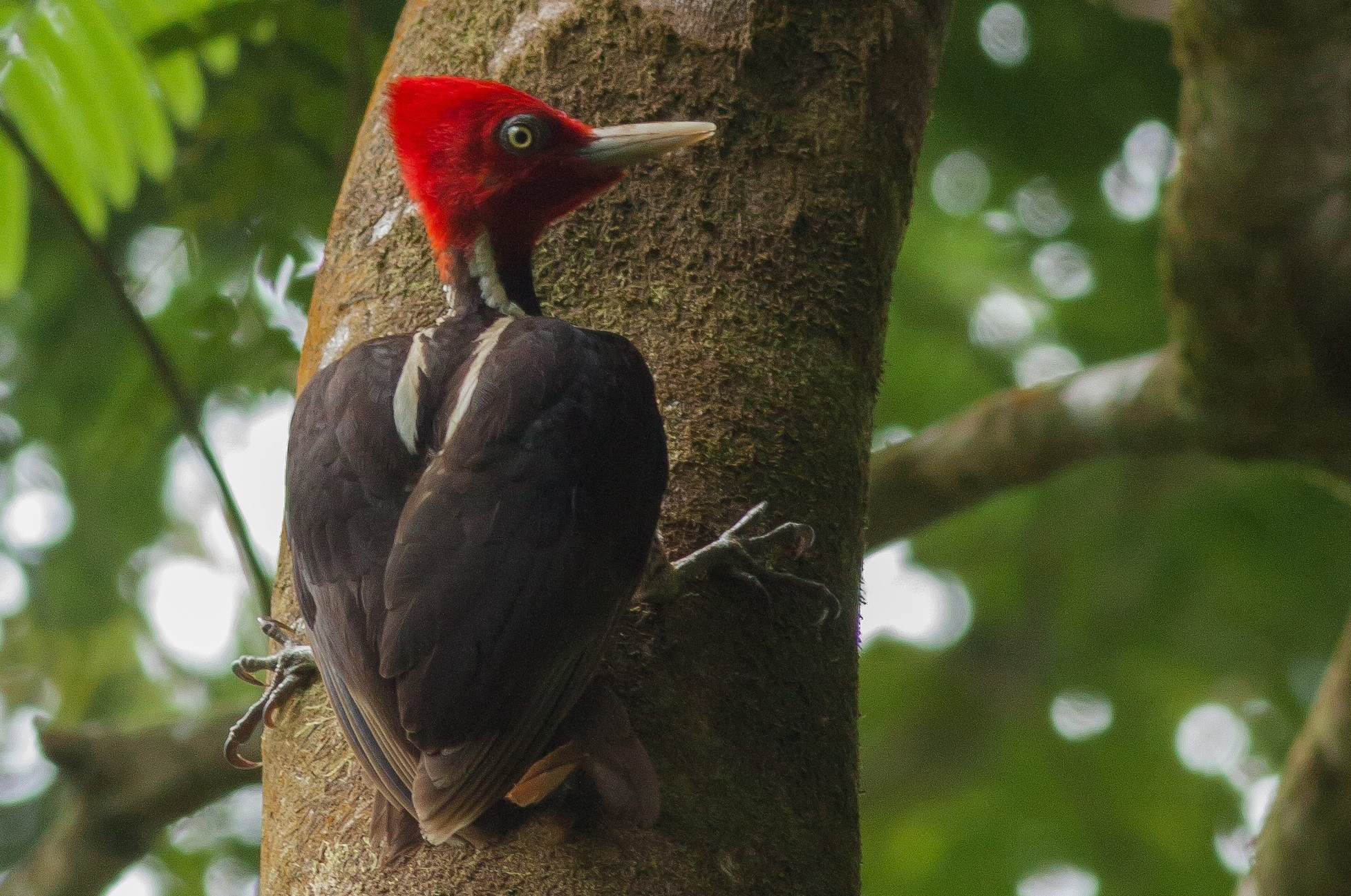
Woodpeckers have two toes placed backward and two forward, whereas most birds have three toes pointing forward and one backward. To get even better foothold on a thick tree, the outer hind toes can be placed pointing outward, as to prevent sideways rotation around the tree.
The tail feathers are very stiff and serve to provide a third support, resulting in a solid placement of the woodpecker against the tree, which is necessary when the woodpecker starts hammering away.
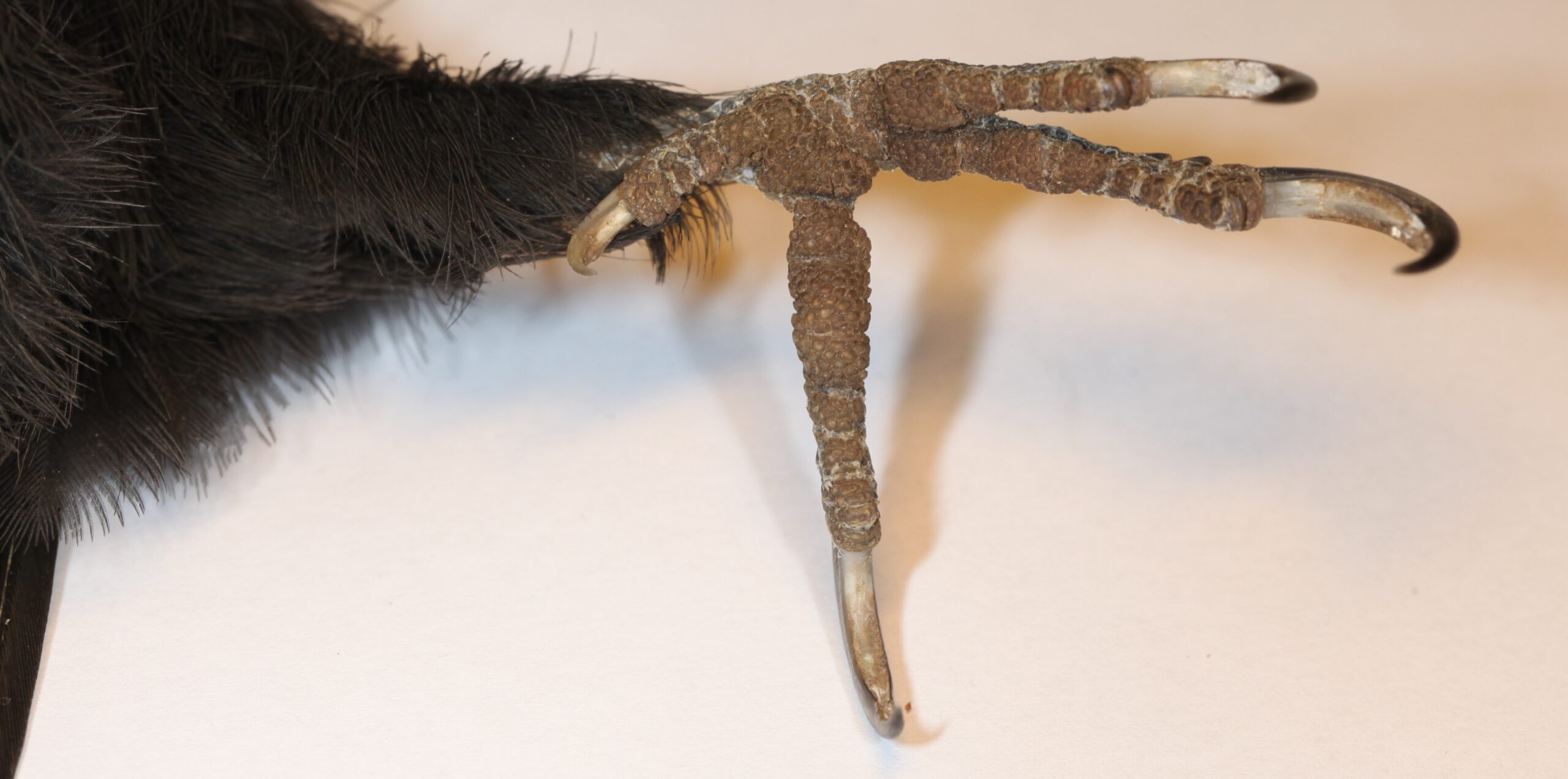

Manoeuvring
Flying from one tree to another requires an agile flight, for which black woodpeckers are equipped with broad short wings with wing tip feathers that look like ‘fingers’. These so-called slotted wings reduce drag on the wing tips and may increase agility during the flight.

Hammering
Regardless the season, black woodpeckers eat mostly ants and the larvae of longhorn beetles (see video below). Especially the latter food items live hidden away in tree trunks, from which they have to be excavated. Black woodpeckers nest in large tree cavities which they also cut out themselves. Chiselling away that wood requires a sturdy bill. Surprisingly, the upper and lower jaws seem weak separately, but when the jaw muscles contract and the lower jaw is pushed slightly forward, the bill becomes a sturdy chisel.
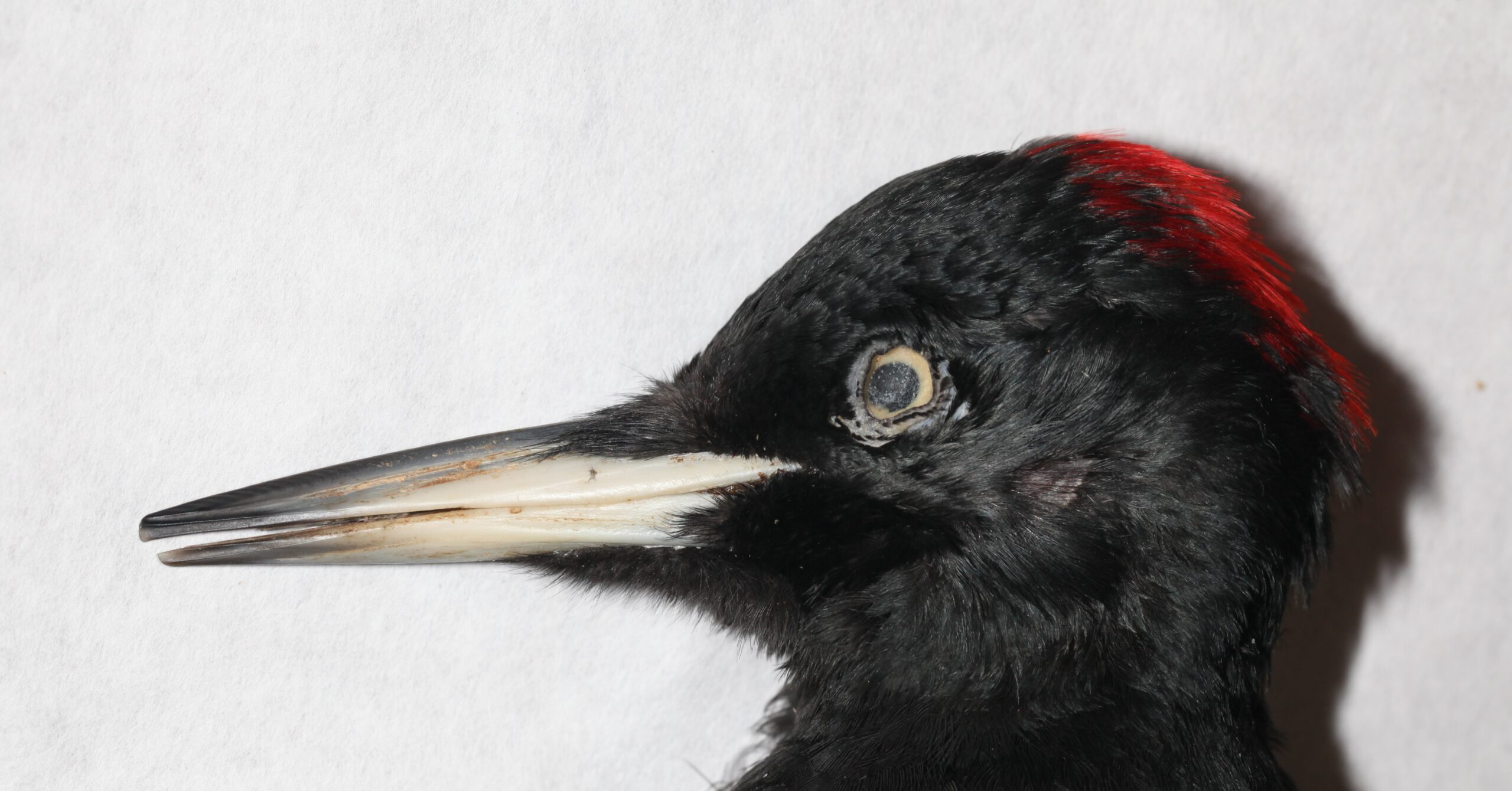
Continue reading
The vertebrae and muscles of the lower neck and back are strongly built and the second pair of ribs is about 3x as thick as the other ribs. This second rib pair serves to attach the muscles involved in delivering the punch to the tree, but also to provide a strong base to transmit impact forces.
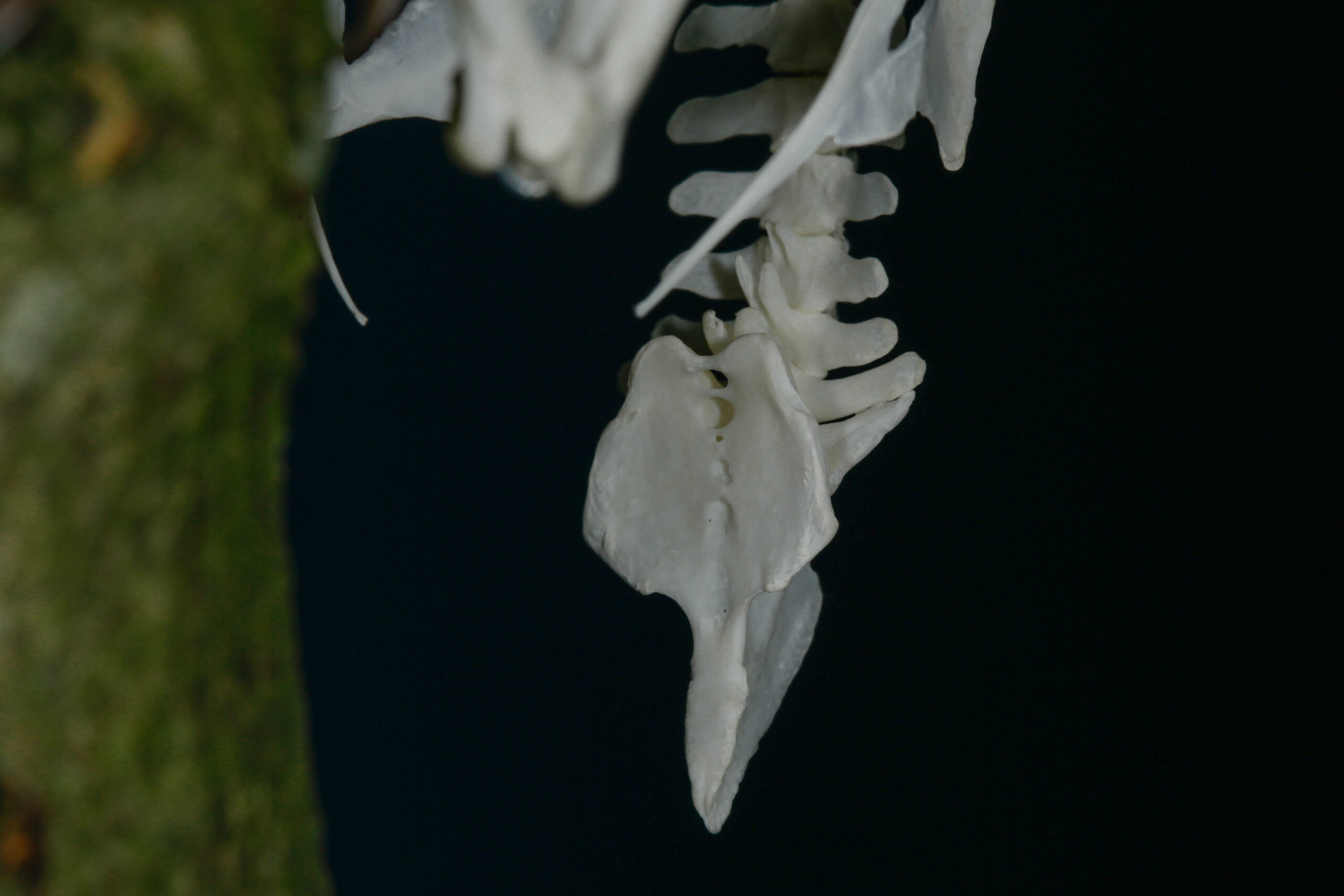
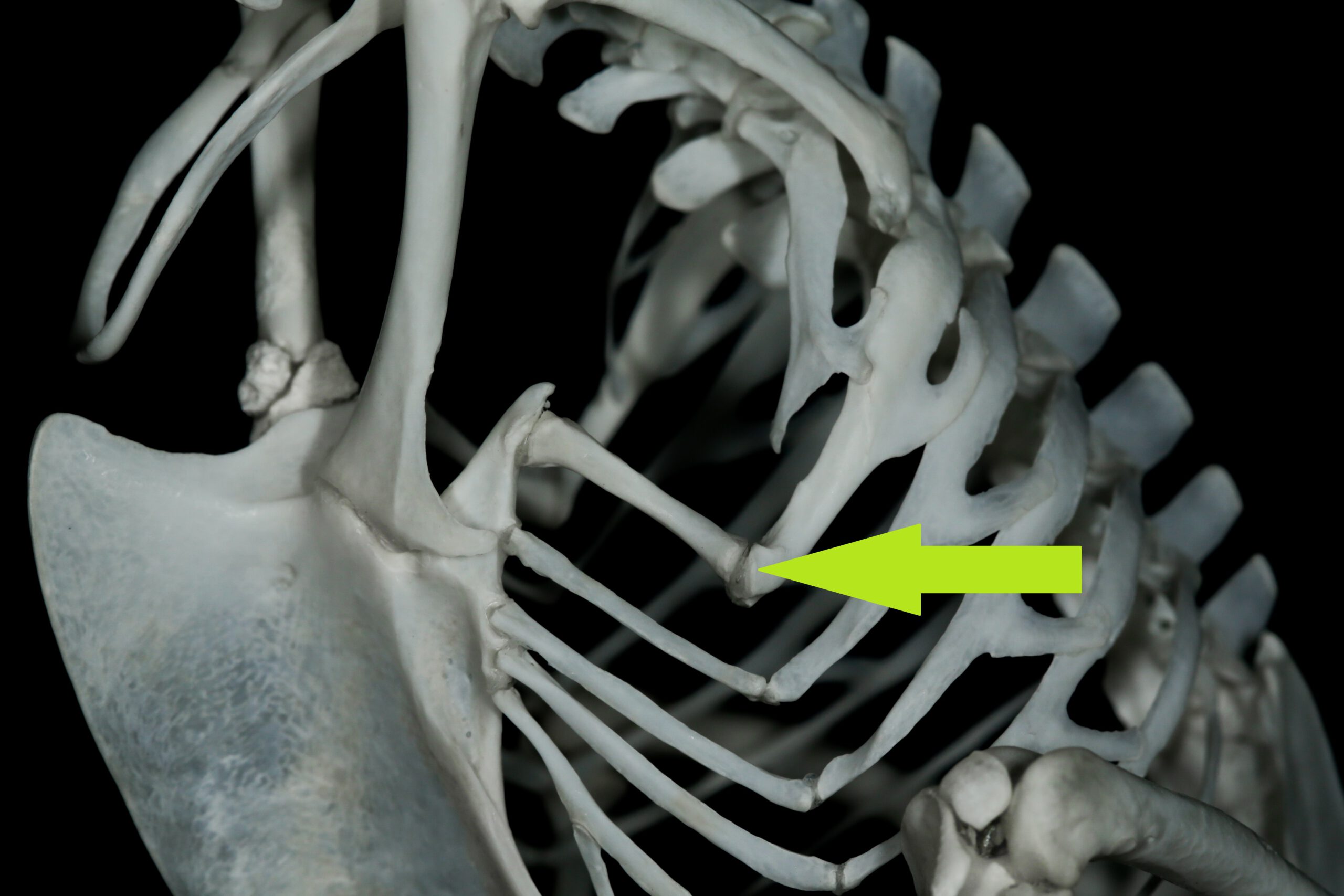
Finally, the impact is partially absorbed by the legs, and the remainder by the tail feathers which are pressed against the tree. The tail bone and muscles are extremely large in order to strengthen the tail when supporting the body, and to pass on the impact force of pecking.
Food processing
When a prey is exposed after all the pecking, the woodpecker can retrieve the prey with its tongue. By extending the tongue bones, the tip of the tongue can reach about 7 cm beyond the tip of the beak. At rest, the tongue bones loop around the head from the base of the tongue up to the nostrils!
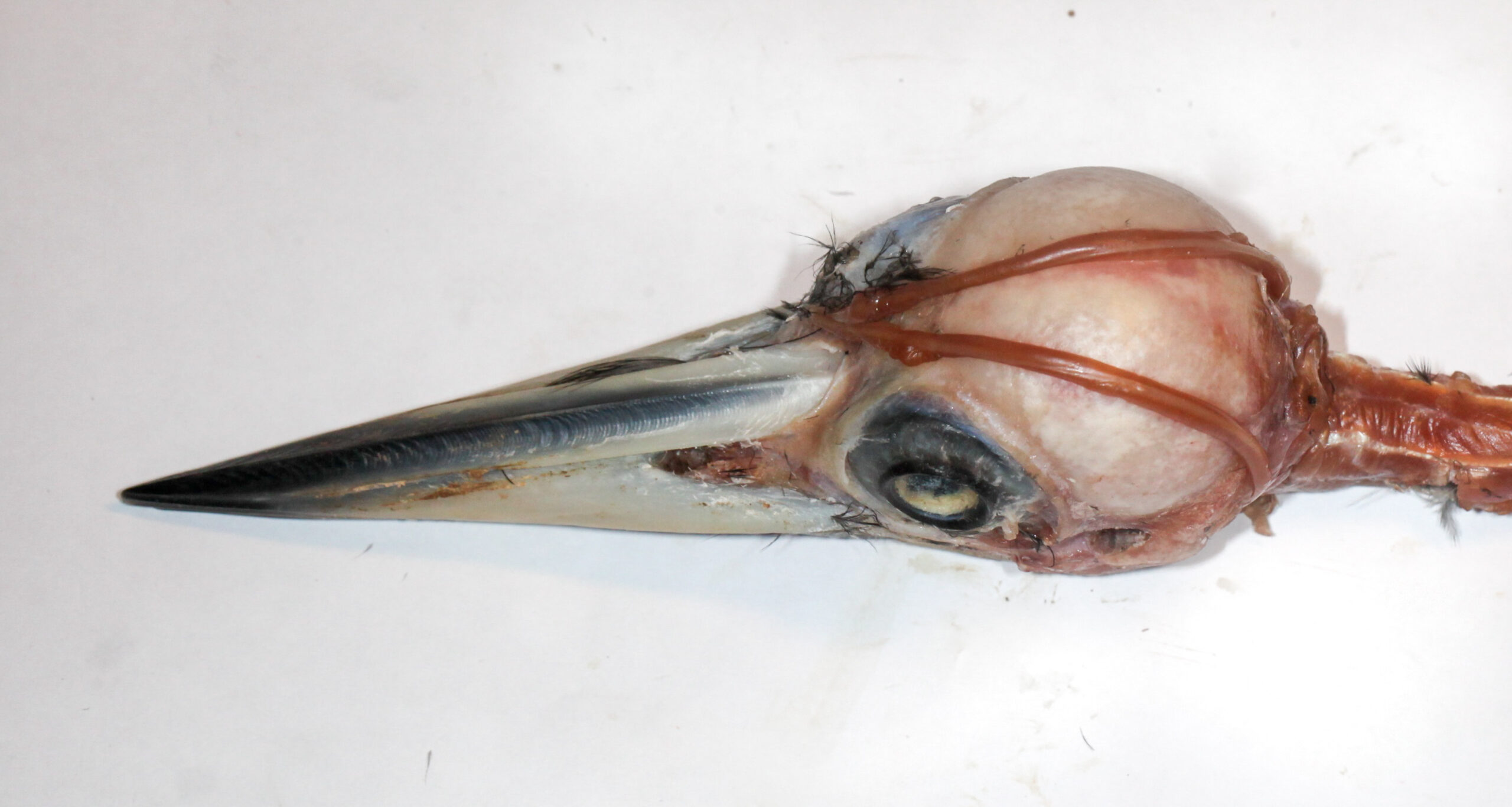
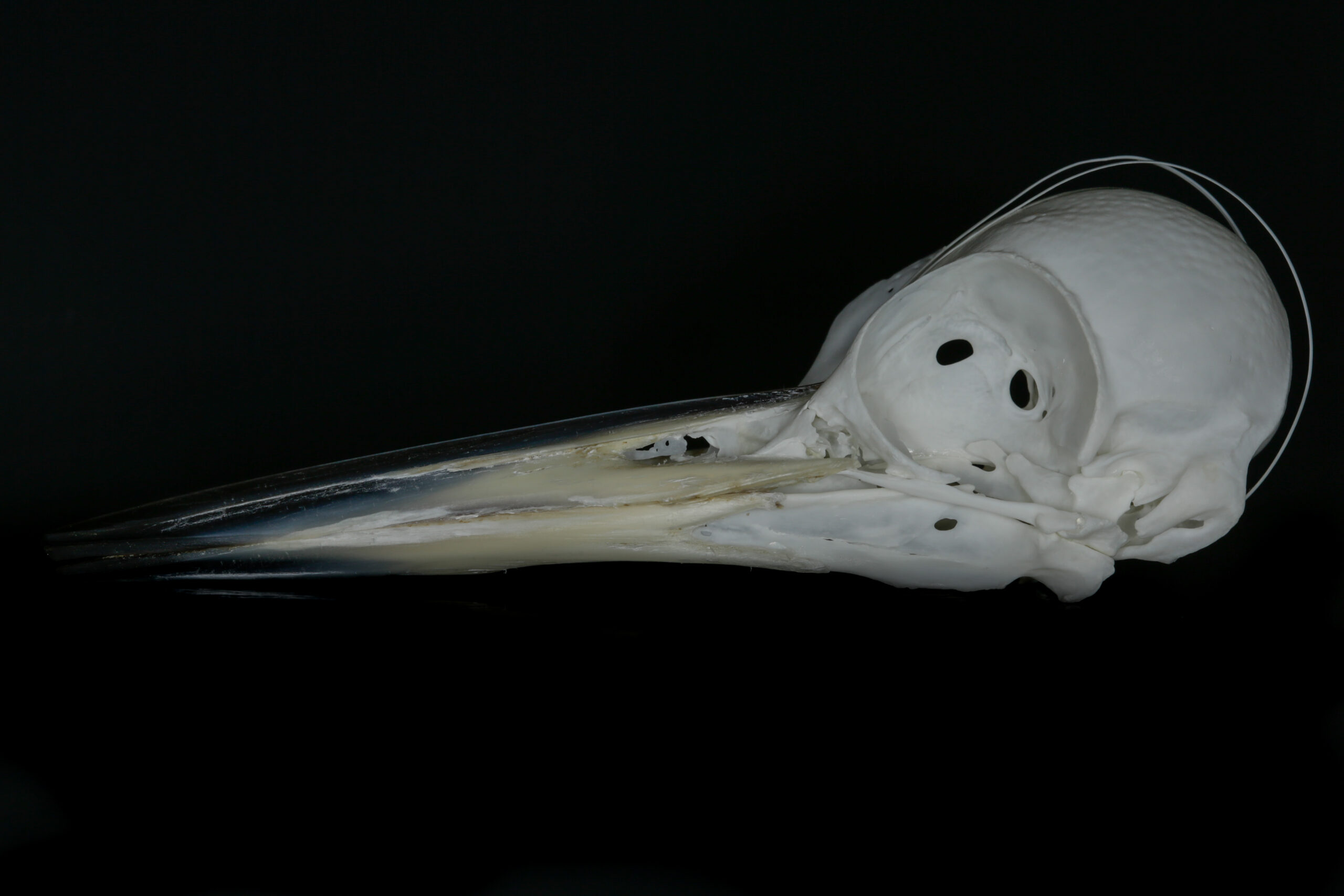
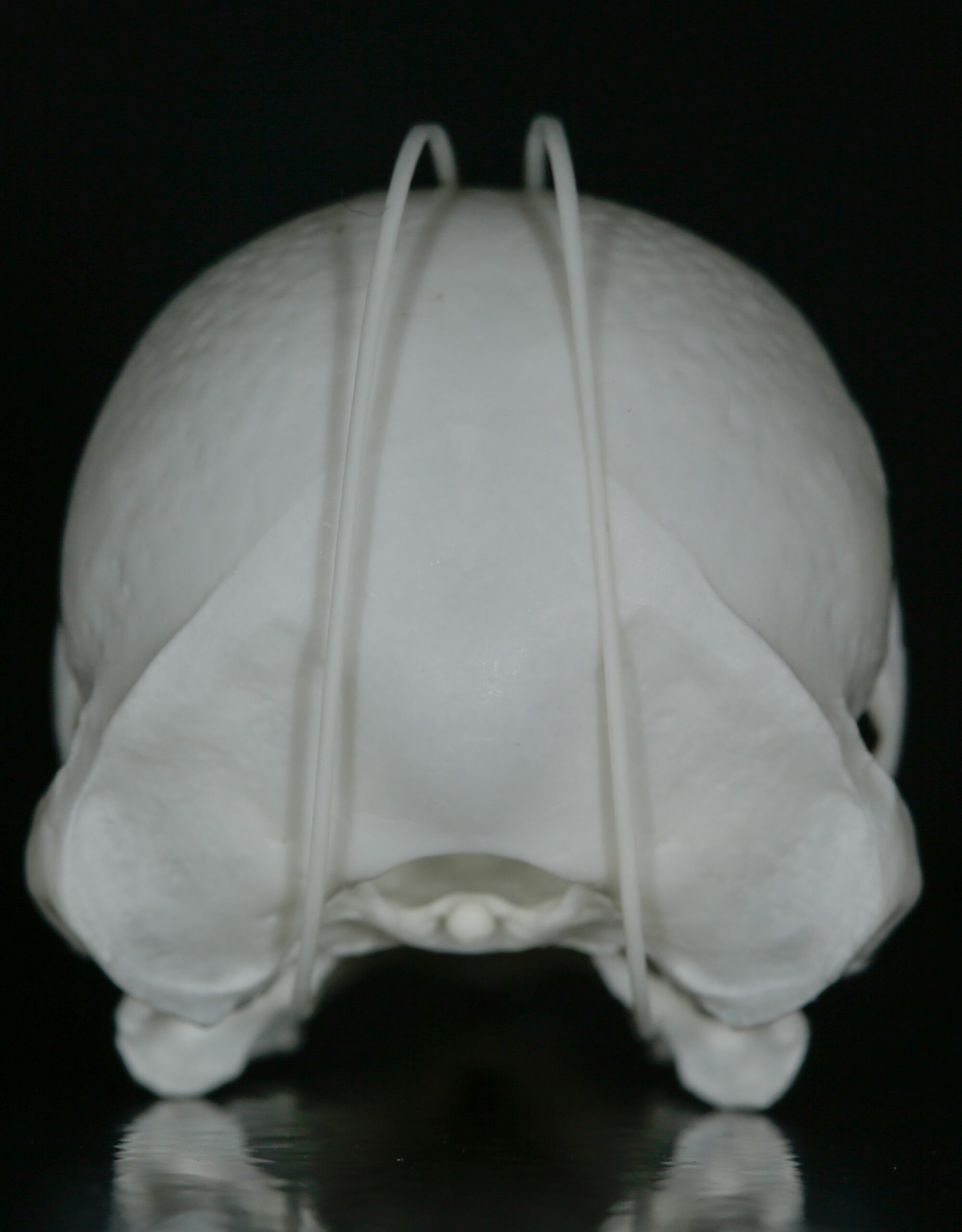
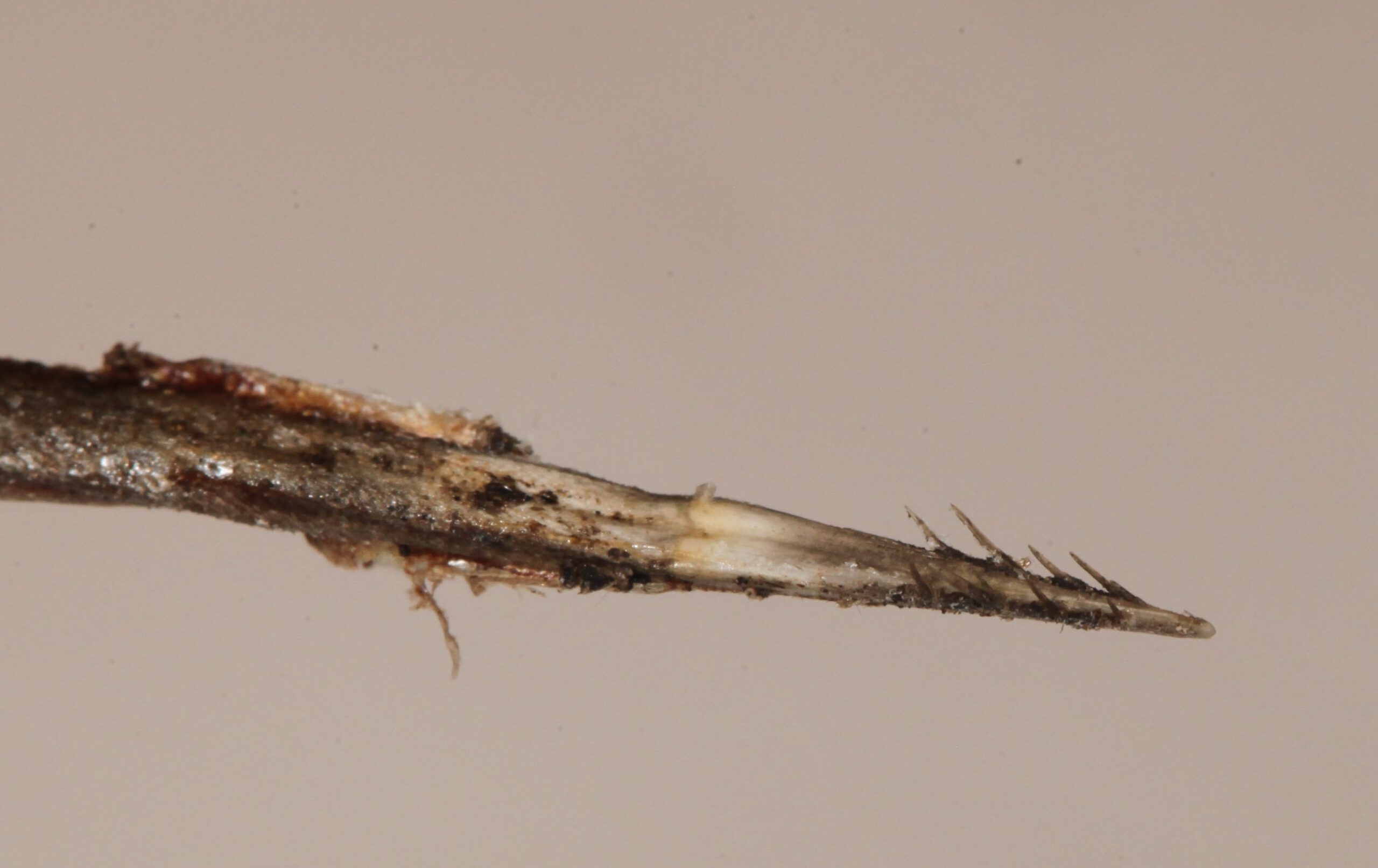
Hooks on the tip of the tongue are used to grasp larger soft insect larvae from their hide-outs. The salivary glands are well-developed to create a sticky slime, which helps ants and other small insects to stick to the tongue.
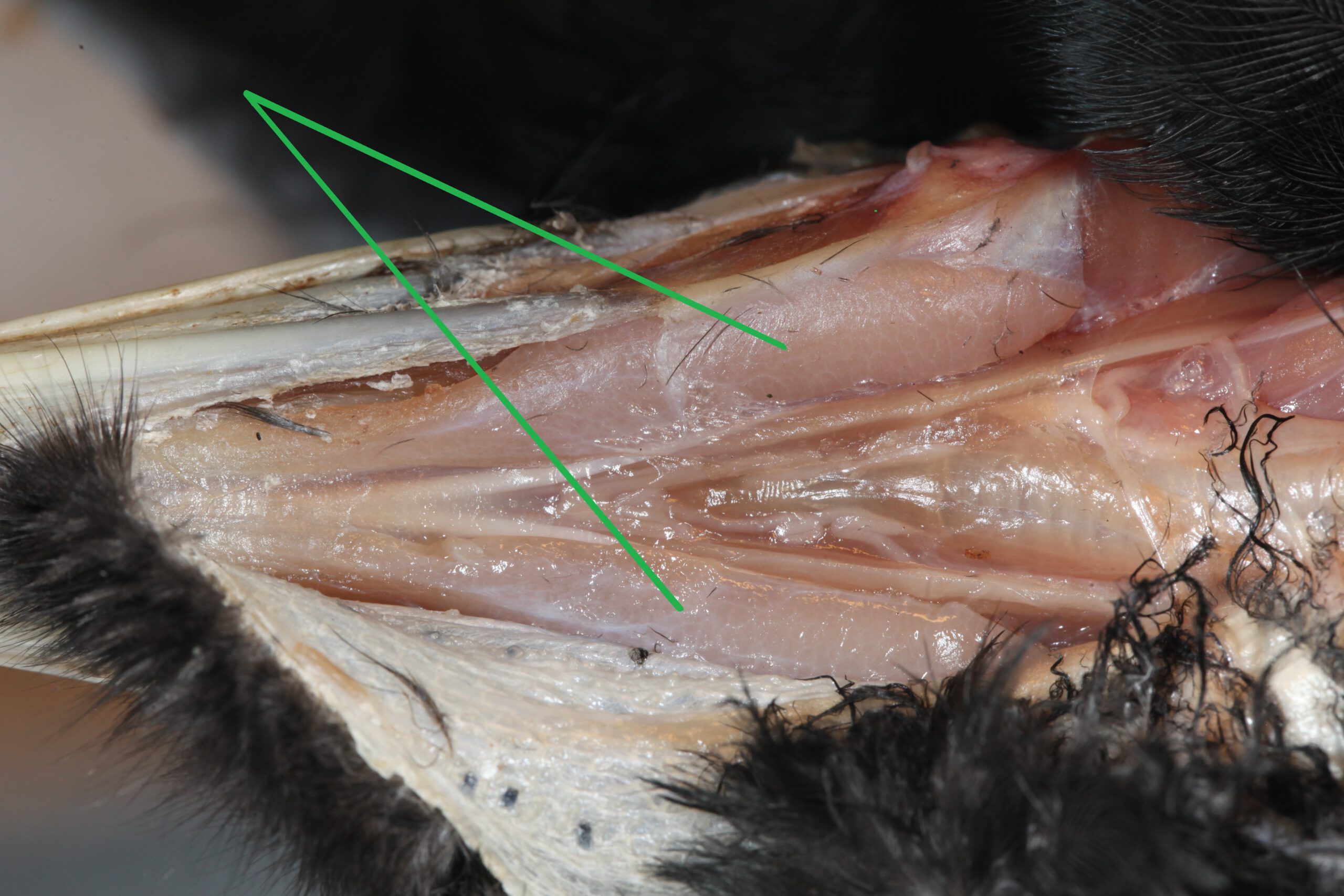
Because the diet is made up of protein rich insects, which is relatively easy to digest, the stomach is not very muscular and the anatomical features of the digestive tract are simple.
